In golf there are different surfaces (sand, grass) but even the same ones can have distinctive features (incline, slope, for example), and this undoubtedly, conditions our golf stance (one foot higher than the other, etc.) whens striking the ball.
The more we "train" in these circumstances, the better will be our chances of success when actually playing. This is why including specific stimuli in exercise sessions, such as training in sand or grass can be quite interesting. We should not overlook the fact that one of the principles of sports training is "specificity" which, together with other aspects, is a key to obtaining the best results.
At the same time, working on “irregular" surfaces is a powerful tool for practising ”Core Stability" which, as I have mentioned in previous articles, is another vital aspect in achieving a consistent and effective golf swing. Having the ability to be "stable" at the moment of hitting the ball on challenging terrain and in different situations will lead to improved performance.
In conclusion, I can assure you that outdoor training is extremely enjoyable and a way to escape the classic gym workout. If you have that opportunity, do not waste it!
Here I offer two options on sand and grass, but remember: they are only examples and they must be selected by a professional according to each player's individual characteristics.
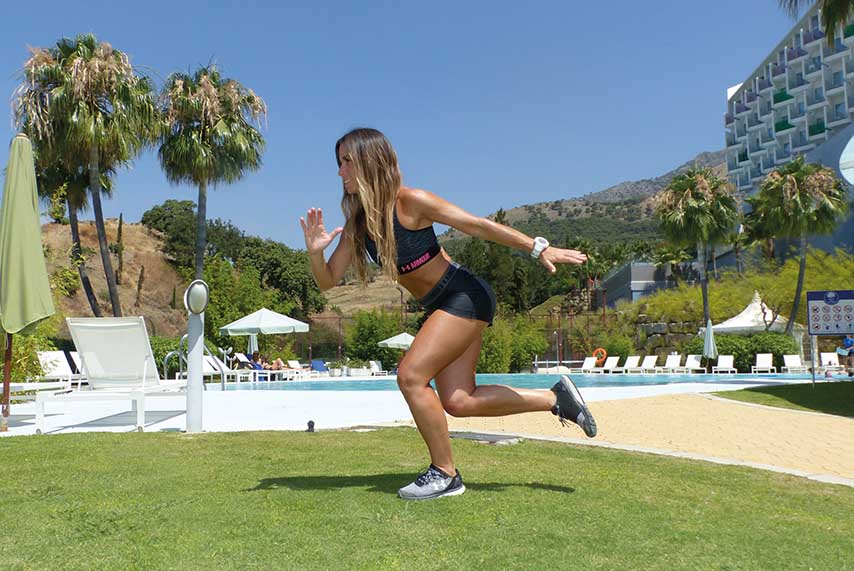
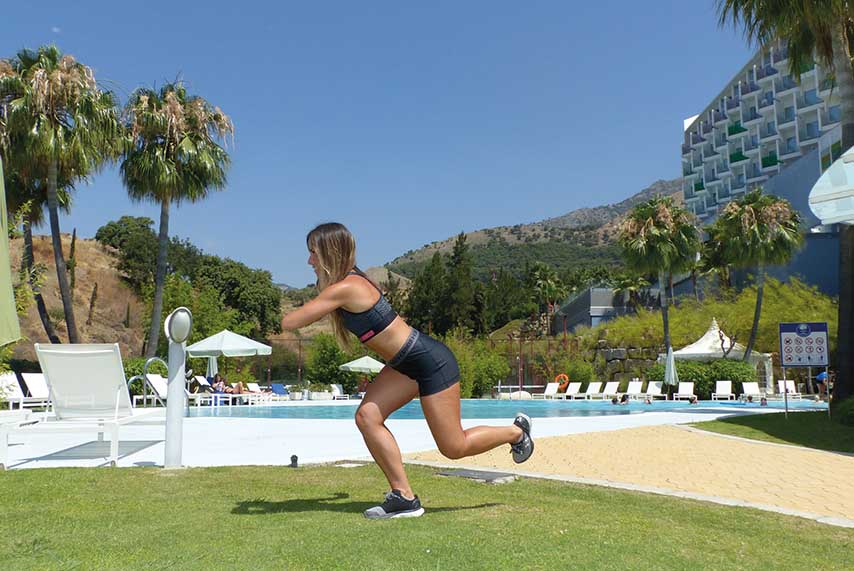
Exercise 1
Grass Area
Side jumps: Perform side jumps, landing on a monopodal support. Try to land as stable as possible and also do it by lowering your centre of gravity slightly, as if you want to perform a half-squat on one leg.
This works the core, gluteal muscles and stability in general.
Progression: perform the exercise in an area with some inclination and/or slope.
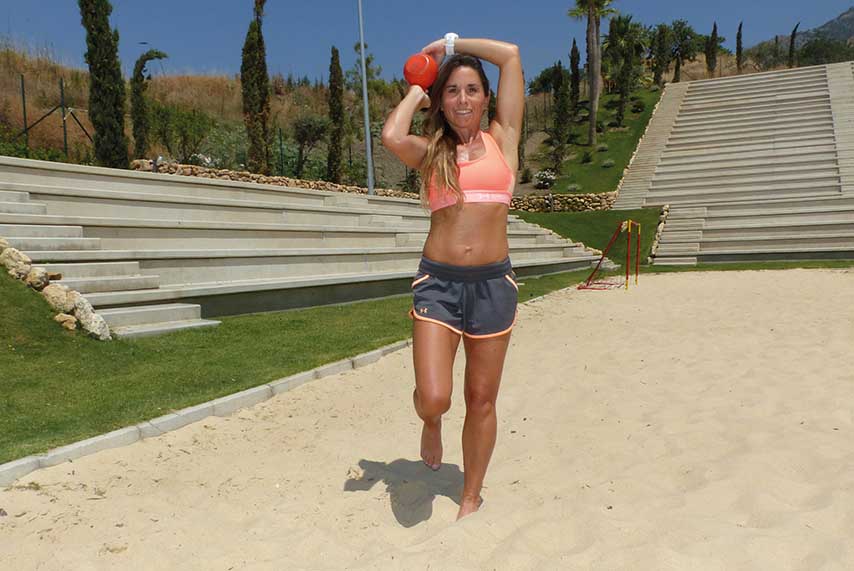
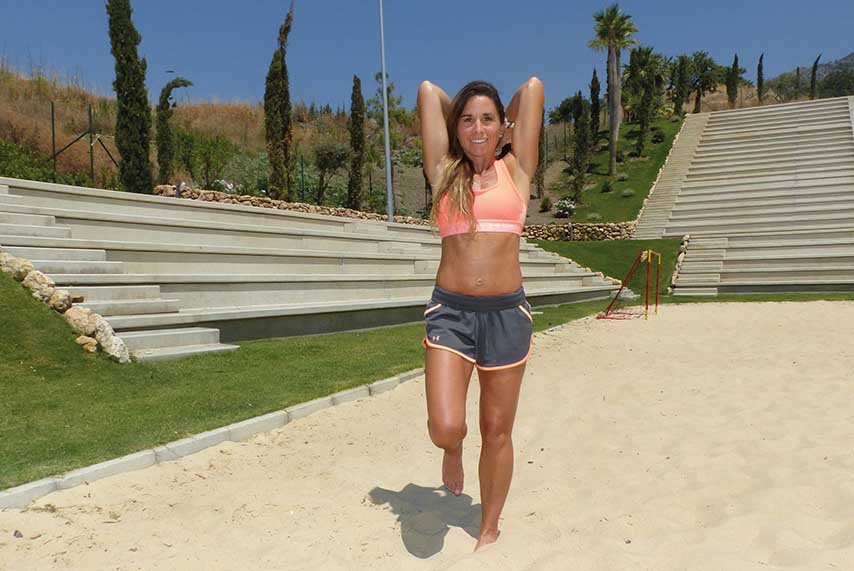
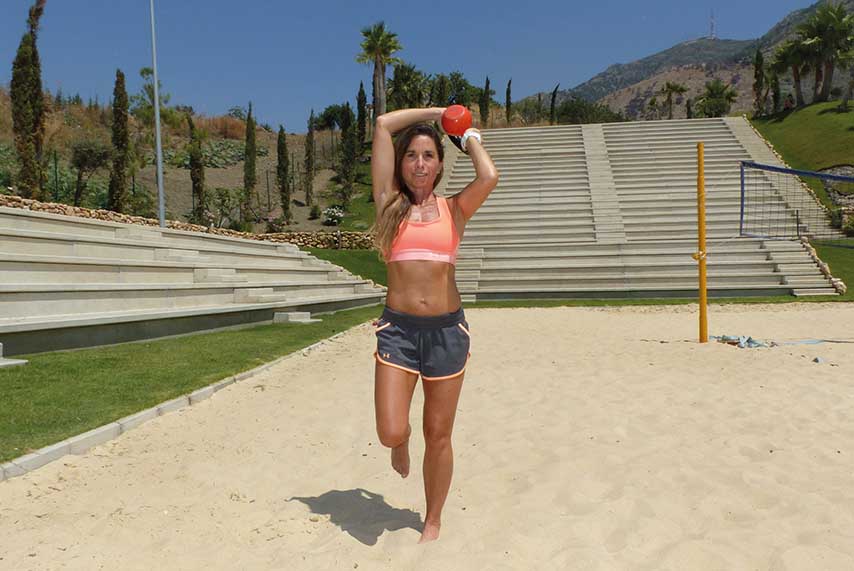
Exercise 2
Sand Area
Circles around the head: In a standing position and with a monopodal support, make circles around the head with a kettlebell, disc or weight, one way then the other, trying to keep the body as stable as possible. Change your leg
We work shoulder mobility, mainly mid-gluteus and central stability, pelvis and ankle.



